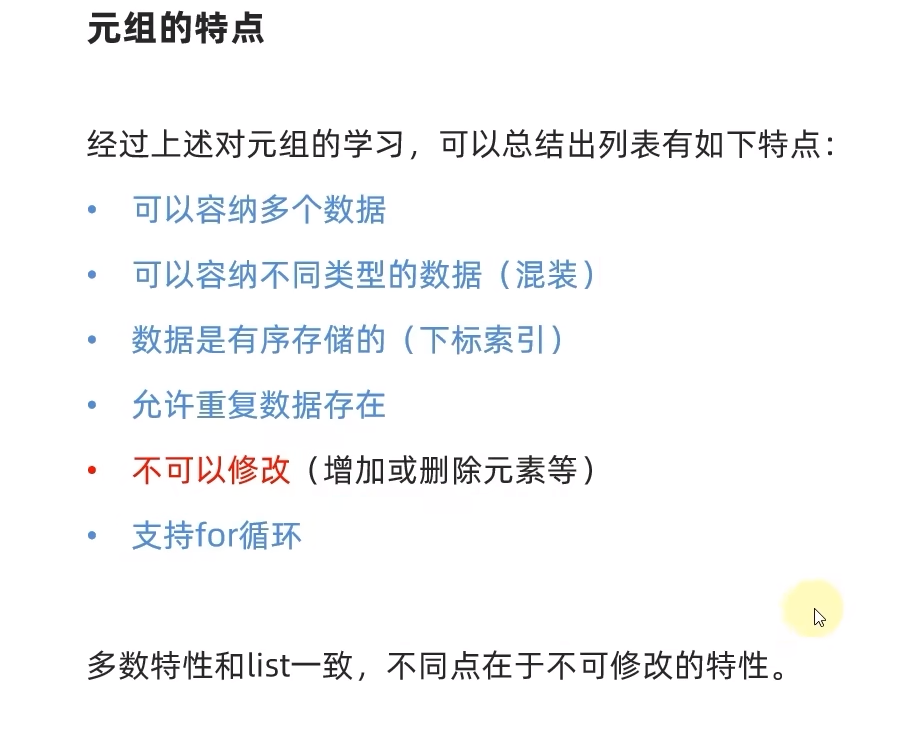
"""
演示tuple元组的定义和操作
"""
# 定义元组
t1 = (1, "Hello", True)
t2 = ()
t3 = tuple()
print(f"t1的类型是:{type(t1)}, 内容是:{t1}")
print(f"t2的类型是:{type(t2)}, 内容是:{t2}")
print(f"t3的类型是:{type(t3)}, 内容是:{t3}")
# 定义单个元素的元素
t4 = ("hello", )
print(f"t4的类型是:{type(t4)}, t4的内容是:{t4}")
# 元组的嵌套
t5 = ( (1, 2, 3), (4, 5, 6) )
print(f"t5的类型是:{type(t5)}, 内容是:{t5}")
# 下标索引去取出内容
num = t5[1][2]
print(f"从嵌套元组中取出的数据是:{num}")
# 元组的操作:index查找方法
t6 = ("传智教育", "黑马程序员", "Python")
index = t6.index("黑马程序员")
print(f"在元组t6中查找黑马程序员,的下标是:{index}")
# 元组的操作:count统计方法
t7 = ("传智教育", "黑马程序员", "黑马程序员", "黑马程序员", "Python")
num = t7.count("黑马程序员")
print(f"在元组t7中统计黑马程序员的数量有:{num}个")
# 元组的操作:len函数统计元组元素数量
t8 = ("传智教育", "黑马程序员", "黑马程序员", "黑马程序员", "Python")
num = len(t8)
print(f"t8元组中的元素有:{num}个")
# 元组的遍历:while
index = 0
while index < len(t8):
print(f"元组的元素有:{t8[index]}")
# 至关重要
index += 1
# 元组的遍历:for
for element in t8:
print(f"2元组的元素有:{element}")
# 修改元组内容
# t8[0] = "itcast"
# 定义一个元组
t9 = (1, 2, ["itheima", "itcast"])
print(f"t9的内容是:{t9}")
t9[2][0] = "黑马程序员"
t9[2][1] = "传智教育"
print(f"t9的内容是:{t9}")

